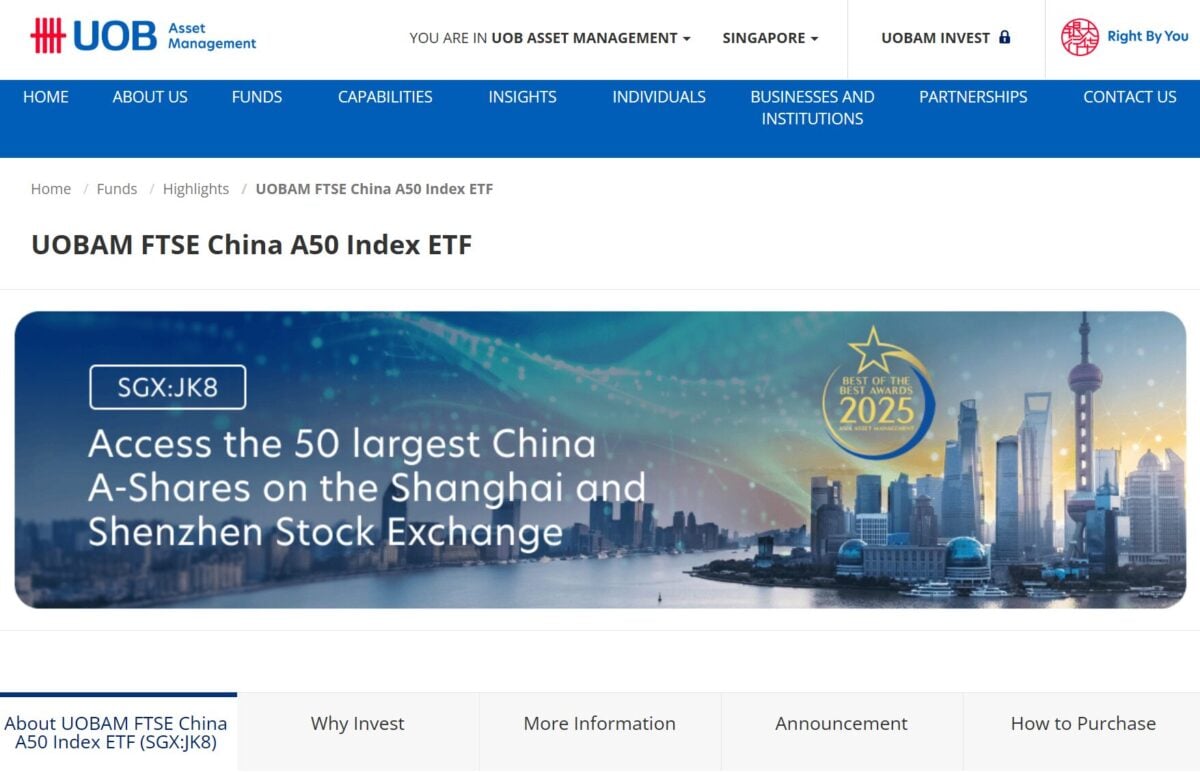
Against the backdrop of simmering geopolitical uncertainties and increasingly volatile market, investors may prefer exposure to guaranteed investments.
When investing in products that claim to pay guaranteed returns, you need to weed out the potential scams – i.e. investments that sound too good to be true. You can refer to the MAS Investor Alert List, which provides a list of unregulated persons or companies as a first layer of check. Note that if a company is not on the list, it doesn’t mean that it is automatically not a scam.
Next, you need to understand the entity that is providing the guarantee. Enjoying guaranteed principal and returns by the Singapore Government, which has a triple-A rated credit rating, is not the same as a Fintech firm trying to win market share.
When it comes to guaranteed returns, you need to understand what the risk-free rate it. Any “guarantee” on your rate of return or principal comes with greater risks. Perhaps more than you understand, if you do not do your own research.
What Is Risk-Free Returns?
The risk-free return refers to a rate of return that you can expect to achieve even if you don’t take on any risk. Theoretically, there’s no such investment as there will always be some form of risk that we take on when making an investment. The closest proxy for the risk-free rate is the Singapore Government Securities.
This also means any guarantee you get from other entities come with higher risks – which is why you are earning a higher return.
Nevertheless, investments that provide guanrateed principal and returns can be a good way for those who are extremely risk-averse or unsure about investing to get started.
We look at 6 types of investments that you can put your money into which provide a guarantee on both your principal and returns. Such investments can also act as a springboard to start investing in riskier investments as you gain knowledge and confidence.
#1 Singapore Government Treasury Bills (T-Bill)
Treasury bills are typically useful for investors who are looking for very short-term investments of between six months to one year, without taking on much investment risk.
A good proxy for the risk-free rate in Singapore is the returns that the government of Singapore, one of the few triple-A-rated economies in the world today, pays on its 6-month or 1-year treasury bills.
The latest 6-month T-bill issued in March 2025 offered a cut-off yield of 2.56% per annum. This should be representative of the risk-free rate you can earn in Singapore – and investing in products with incrementally higher returns come with higher risks.
Read Also: Treasury Bills (T-bills): What Are They And How You Can Buy Them
#2 Singapore Government Bonds
The Singapore government also issues longer-termed bonds, between 2 years and 30 years. These bonds typically pay higher returns than shorter-termed T-bills. With all things equal, a bond with a longer maturity is typically deemed to carry more risks than the same bond with a shorter maturity period. Nevertheless, it is also regarded as close to risk-free rate for each investment time horizon.
According to the Yield Curve depicted on the MAS website, Singapore Government Bonds should be paying these rates. As you can see in the table below, the longer the bond term, the higher the yield would be, but in the very long-term (i.e. 20-year and 30-year), the yield tapers slightly. Unlike recent months, when shorter-term yields were higher, creating an inverted yield curve, the yield curve is what we would expect to see.
| Singapore Government Bond Term (Tenor) | Yield (p.a.) |
| 2 years | 2.49% |
| 5 years | 2.53% |
| 10 years | 2.67% |
| 15 years | 2.74% |
| 20 years | 2.75% |
| 30 years | 2.72% |
In September 2021 the government also issued the first tranche of its SINGA bonds to finance major long-term infrastructure projects, such as new railway lines, coastal protection projects and other infrastructure projects that will benefit current and future generations of Singaporeans. SINGA bonds are also considered Singapore Government Securities (SGS) bonds. The Singapore government also launched a 50-year Green SGS bond in August 2022. These are considered Singapore government bonds as well.
While you can invest in Singapore Government Securities directly via your bank account, you can also invest in an ETF such as the NikkoAM ABF Singapore Bond Index Fund, which has exposure to securities issued by the Singapore Government and its related entities. You can invest in the ETF via any brokerage firm, including Interactive Brokers (IBKR), moomoo, POEMS, SAXO, and Tiger Brokers.

Source: ABF Singapore Bond Index Fund
#3 Singapore Savings Bonds (SSB)
By now, you would have noticed a recurring theme. The safest investments that can guarantee your capital and your returns are bonds issued by the Singapore government.
First launched in October 2015, the SSB pays a step-up interest rate each year, up to the 10th year. This means that the bonds pay a lower return in the beginning years, and if investors do not redeem the bond, it continues to pay a higher rate each year, until the 10th year. This is primarily to recognise the fact that investors are holding the bonds for a longer-term.
Here is the rate of each SSB issue, if you held it for the full 10-year time frame, since its inception in October 2015.

In general, the SSB offers superior liquidity, allowing investors to redeem it at any point without worrying about market price. This usually means that the SSB should pay out similar, but slightly lower, interest rates than comparable government securities that do not offer this feature.
As depicted in the chart above, the SSB interest rate yields was on a downward trajectory since December 2018, but have since climbed strongly along with the inflation rate and Fed rate hikes. The latest SSB issue for April 2025 is offering a 10-year yield of 2.85% p.a. If you hold the SSB for only one year, you can still earn 2.73%.
In the current interest rate environment, the 1-year SSB return is very close to the 10-year average return. This truly speaks to the “higher for longer” interest rate outlook. At the same time, the 1-year return on the SSB is 2.73% p.a., which is slightly higher than the latest 6-month T-bills, paying 2.56% p.a. This makes sense as you enjoy better liquidity when investing in SSBs, but you earn this over a 1-year holding period rather than 6 months.
Read Also: Complete Guide To Buying Singapore Savings Bonds (SSB)
#4 Fixed Deposits
Although not commonly referred to as an investment, fixed deposits offer you a way to earn better returns on your money rather than leaving it in a savings account or under your pillow. As a reference, the three local banks in Singapore are currently offering the following Singapore-dollar fixed deposit rates.
| Bank/ Tenor | 12 months p.a. | 24 months p.a. | 36 months p.a. |
| DBS | 2.45% | 2.45% | 2.45% |
| UOB | 1.5% | 1.6% | 1.6% |
| OCBC | 0.5% | 2.5% | 2.8% |
Of course, many other banks are offering their own fixed deposit schemes as well as promotional rates which can be significantly better than the board rates. Many of them, including the three above, may come with certain conditions you have to fulfil to achieve the promotional rates.
Looking at the figures on offer, DBS is offering the best board rates on fixed deposits. In fact, it’s 1-, 2- and 3- year interest return of 2.45% p.a. is poorer than T-bills and government securities for both the short and mid-term.
UOB and OCBC are offering even lower board rates. But, do note that these are based on board rates, and individual banks likely offer promotional rates which may be more competitive.
In addition, deposits with all full banks and finance companies in Singapore are covered under the Singapore Deposit Insurance Scheme, insuring up to $100,000 of your deposits in each account. All full banks and finance companies in Singapore, a total of 37 are listed on the SDIC website, are members of the Singapore Deposit Insurance Scheme.
Read Also: Beginners’ Guide To Fixed Deposits In Singapore
#5 CPF Top-Ups
To earn better interest returns, you can also consider making CPF top-ups into your Special Account (SA) via the Retirement Sum Topping-Up (RSTU) Scheme. These funds are guaranteed by the Singapore government and offer a minimum guaranteed return of 4.0% p.a.
You can also make Voluntary Contributions (VC) into your Ordinary Account, Special Account and MediSave Account. The floor rate on your OA is 2.5%, while the floor rate for the Special Account, Retirement Account, and MediSave Account is 4.0%.
Moreover, the first $60,000 of your CPF monies, with up to $20,000 in your CPF Ordinary Account (OA), will earn an additional 1.0% p.a. in interest returns. This means your top-ups may earn up to 5.0% p.a. if you top-up your CPF SA in the early years.
You also stand to receive up to $8,000 in tax reliefs when you make RSTU top-ups into your CPF SA, as well as an additional $8,000 in tax reliefs when you make cash-ups into a loved one’s CPF SA. No tax reliefs are provided when you make Voluntary Contributions to your CPF accounts.
However, before you do this, you need to know that unlike the investments listed in this article, which can be sold or redeemed early (notwithstanding that you may lose some value when you do this), topping up your CPF SA is irreversible. You will only receive it once you hit 65 in the form of monthly CPF LIFE payouts, rather than in cash.
Read Also: What Would It Take For CPF Interest Rates To Increase Beyond 2.5% (For OA) And 4.0% (For SA and MA)
#6 Savings Plans
Savings plans, offered by insurance companies, especially those that are non-participating in nature, also guarantee your capital as well as returns. You should also note that savings plans that guarantee your capital but do not guarantee returns also exist.
When investing in a savings plan, you are typically required to lock-in a lump sum investment over a fixed period or make regular contributions over a fixed period. Not adhering to the terms and conditions of these policies may see you lose a substantial amount of the returns you expected to receive. This is why you need to be sure of your liquidity needs for the funds you intend to invest.
These plans are also covered by the Singapore Deposit Insurance Scheme and may also offer an insurance component that pays out in the event something unfortunate happens to you. One example of a recent Savings Plan is the DBS SavvyEndowment 19, which offers a guaranteed interest return of up to 2.58% p.a. for its 3-year plan and 2.67% p.a. for its 4-year plan. There is also a non-guaranteed interest of up to 0.15%.
Similarly, many savings plans are periodically offered for a limited time and limited amount.
Moving On To Investments With Greater Risks
Once you’ve built a foundation or started your investing journey, you will have more knowledge and confidence to make riskier investments – to earn potentially higher returns. Riskier, but still relatively safe, investments, such as cash management accounts and/or Corporate bonds may provide a competitive return for your spare cash while still providing a high degree of liquidity.
Beyond these, you can also invest in platforms such as BigFundr, where you can invest in guaranteed real estate-backed loans. While such real estate-backed loans offer guaranteed principal and returns, they are riskier compared to the various investments highlighted above, including cash management accounts and blue-chip corporate bonds – that’s why they also offer higher returns.
As you progress in your investing journey and understand that taking calculated risks over the long term can be financially lucrative, globally-diversified stocks portfolio, properties and other alternative investments may become investment options that can deliver significantly higher returns.
This does not mean you stop being prudent with your investments. On the contrary, you need to be even more prudent when you’re embarking on riskier investments. Many of these riskier investments are volatile and require you to be able to stomach, and ride out, wild price swings at times to earn good returns over the long term.
Read Also: Step-By-Step Guide to Stock Investing in Singapore
The post 6 Investments In Singapore That Provide Guaranteed Principal And Returns appeared first on DollarsAndSense.sg.











